On my way to Kansas City for Woodworking in America, I stopped in Louisville, KY and visited Locust Grove. Locust Grove is a National Historic Landmark built in 1792 by William and Lucy Clark Croghan. Lucy was sister to George Rogers Clark and William Clark of Lewis and Clark. William Croghan was an Irish immigrant, Revolutionary War hero and surveyor that was paid for his services in land.
George Rogers Clark was another Revolutionary War hero and the founder of Louisville. In 1808 in failing health, he moved into Locust Grove with his sister Lucy and William Croghan, his surveying partner.
We were told that the house was built mostly with materials found on the property. The only items purchased were the hardware and the glass for the windows, both brought by river from Pittsburgh.
Walnut was one of the dominant wood species. Much of the house is built with walnut. More walnut than we are used to seeing. Walnut was not always a premium wood. At one time, it was just wood. I have been told this is fairly common in the Ohio valley and points west.
Knowing this, it is still surprising to see entire paneled walls of walnut:
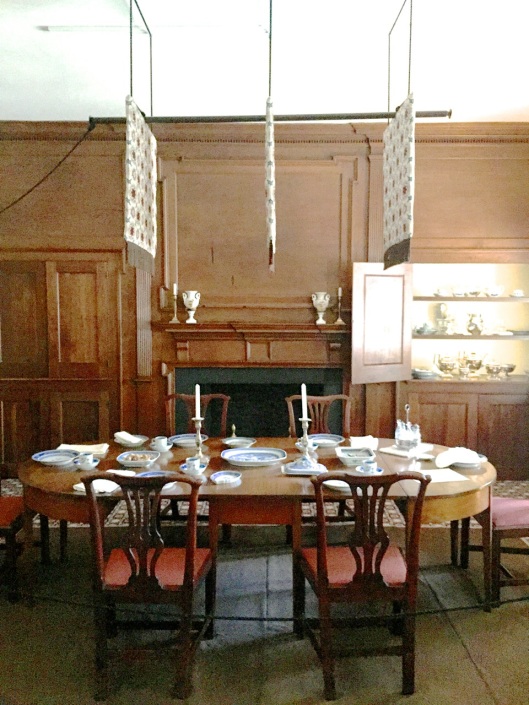
The fabric panels were waved during meals to move the air and discourage flies. They Might have been called pankhas.
Or this handsome example:
I asked and was told it is poplar beneath the verdigris paint:
Doors are walnut as well. These doors feature a detail I noticed on the doors at Drayton Hall near Charleston. The perimeter of the door is tapered with the high side being toward the important room.
The original furniture was sold at auction in the 19th century. The furniture in the house is period appropriate to the early 19th century, the era to which the house has been most recently restored. The furniture selection is based on the auction inventory.
One odd little desk caught my eye:
Only the half blind dovetail on the right side of the drawer isn’t:
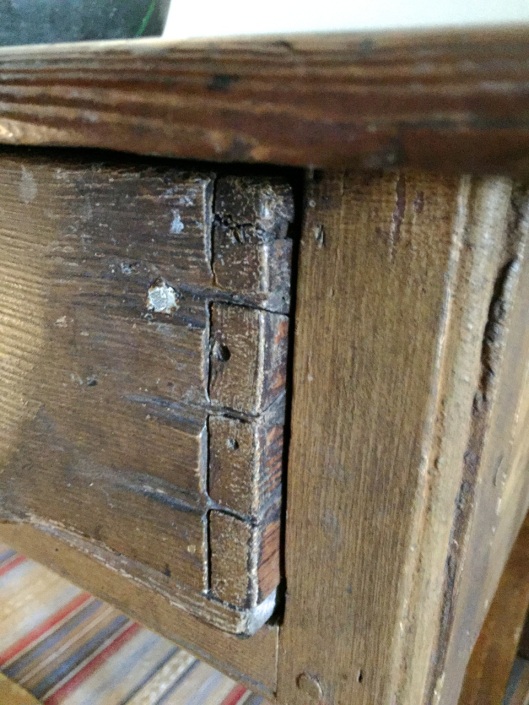
Is this intentional or was there too much aggressive planing? The left side of the drawers is as we would expect, i.e., normal.
On the ground are several reconstructed buildings including the woodworking shed:
It is filled tools of the proper vintage:
To see the rest of the furniture, house and grounds, click HERE.

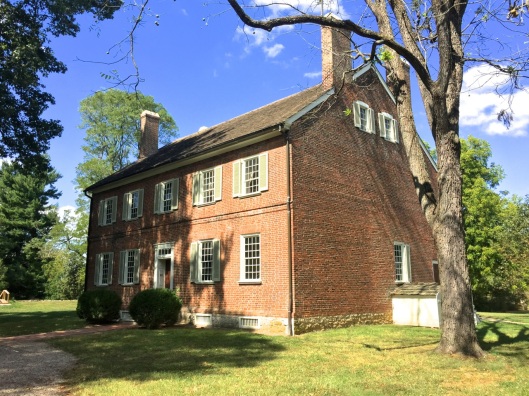
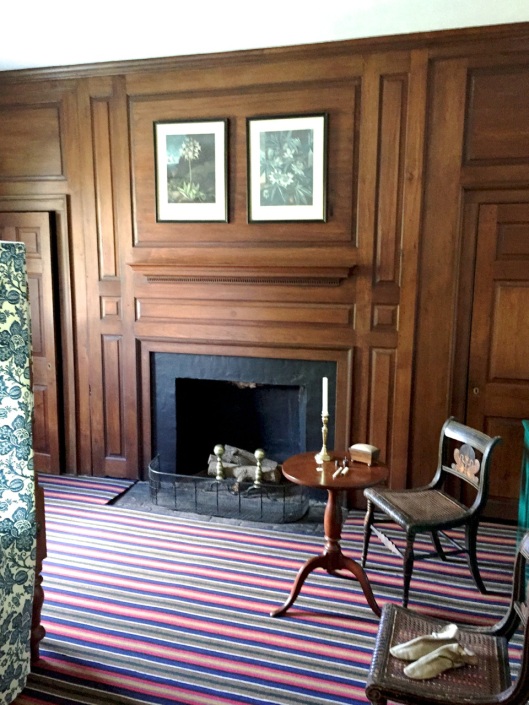
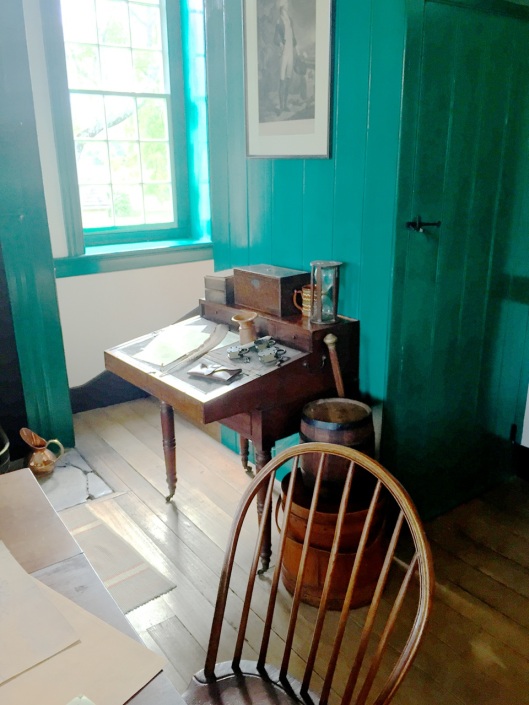
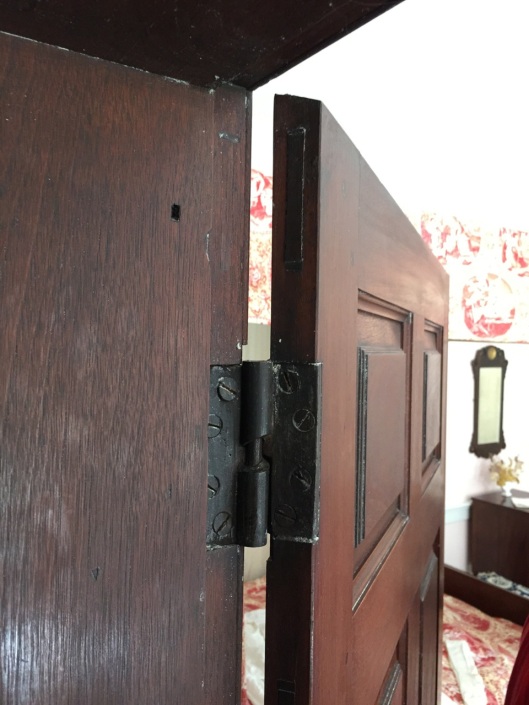
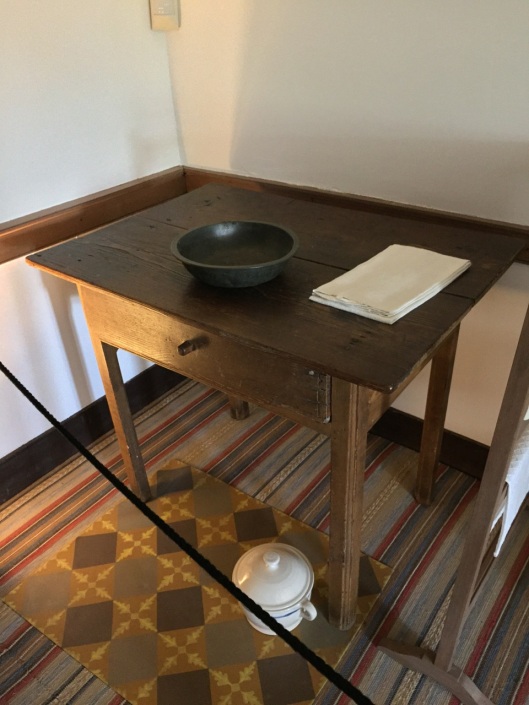
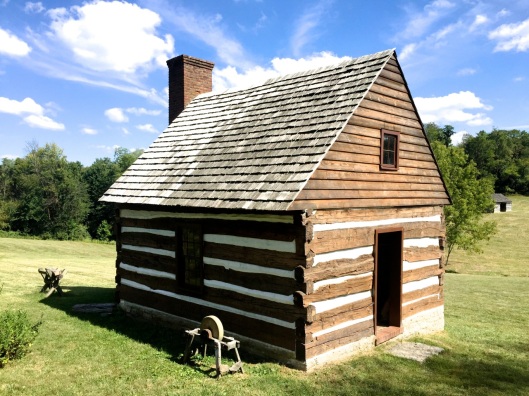
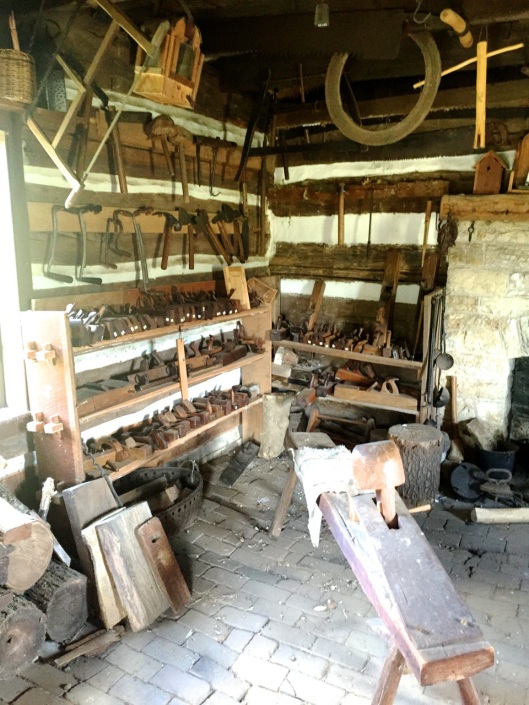
The panels over the table are a ‘punka’, operated by a punkawallah. Pankha is the Hindi word which migrated into English during the Raj as ‘punka’.
Leave it to you to find interesting stops along the way. Now, can we get the same photo easy treatment on the Motel 6 you’re staying at?
>The perimeter of the door is tapered with the high side being toward the important room.
As the door starts to open on those hinges, it will rise slightly thus the need for some clearance. The high side reduces the ugly gap and has to be on the opening side of the door.
One of our sons is in Danville, KY so I’m adding this house to our bucket list.
Thanks, Mike,